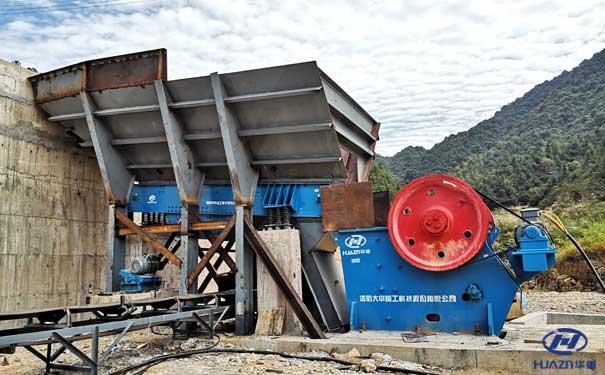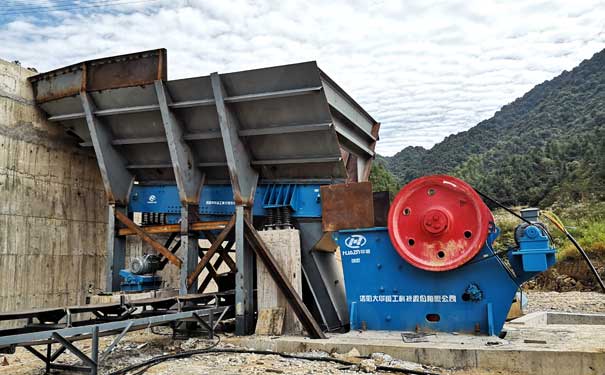Vibrating feeders are widely used in crushing and screening combined equipment in metallurgy, coal mines, mineral processing, artificial sand and gravel, construction waste recycling, building materials, chemicals, abrasives and other industries. The applicable materials include river pebble, granite, basalt, quartz stone, iron ore, limestone and so on.

The vibrating feeder is composed of a feeding trough, a vibration exciter, a spring support, and a transmission device. The vibration source of the trough vibration feed is a vibration exciter, which is composed of two eccentric shafts (active and passive) and a gear pair. The main shaft is driven by the motor through the V-belt, and then the gear on the driving shaft engages the driven shaft to rotate, The active and passive shafts rotate in opposite directions at the same time, so that the tank vibrates, so that the materials flow continuously, and the purpose of conveying materials is achieved.
The vibrating feeder adopts double eccentric shafts as the excitation source, and the amplitude is stable to ensure the fluidity of the vibrated ore rock material and reduce the phenomenon of channel blockage. Therefore, the ore drawing capacity is high, the efficiency is simple, the structure is simple, no rotating parts, and easy to damage. With fewer parts, this series has less vibration power consumption and significant energy saving. The vibrating feeder has low noise when working and adopts a closed structure to prevent dust pollution. The vibrating feeder is highly adaptable to various ore rocks, especially viscous ore materials, and can work in dusty or water-rich environments; it is small in size, light in weight, simple and compact, less investment, and cost-effective. The vibrating feeder has good machine continuity and adjustable excitation force; the electric control adopts a half-wave rectifier, which can steplessly adjust the feeding amount, and can be used in the automatic control production process to realize the automation of the production process.

We often see vibrating feeders in the beneficiation production line, sand production line, and sand production line. In the production process, the vibrating feeder can feed block and granular materials from the storage bin to the receiving device uniformly, regularly and continuously. In the sand and gravel production line, it can continuously and evenly feed the crushing machinery. And coarsely screen the materials. As the auxiliary equipment of these production lines, the vibrating feeder may seem inconspicuous, but without the participation of the vibrating feeder, the entire production line cannot be completed. Therefore, although the vibrating feeder is small, it shoulders an irreplaceable role.

